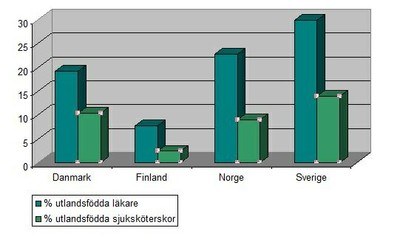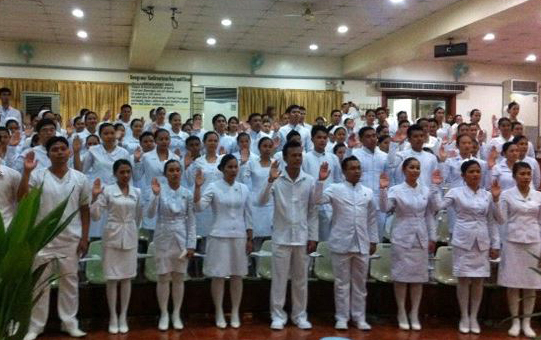The refugee crisis has seen 800,000 people applying for asylum in an
OECD country in 2014, 600,000 of them in Europe. It has deservedly
gained massive attention. Yet the number still does not match the
number of migrants arriving through legal channels, outside of the
asylum system. For 2014 that number was 4.3 million people, up six
percent compared to 2013.
This is according to the OECD’s 2015 International Migration
Outlook, which has a separate chapter on health care professionals.
Most of the doctors seeking work in industrialised countries come from
India, while the Philippines is the world’s largest exporter of
nurses.
The Nordic countries have between 3.3 and 3.9 doctors per one
thousand people. The number of nurses varies between 11.1 to 15.4 per
one thousand people.
If you compare the proportion of foreign born doctors and nurses in
the Nordic region, you will find major differences. Finland has the
lowest number of foreign born doctors at 7.7 percent, and only 2.4 of
nurses there are foreign born. In Sweden 29.8 percent of doctors are
born abroad and 13.9 percent of the nurses.

There are no figures for Iceland in this OECD study
The differences are even bigger in the rest of the OECD. Less than
three percent of doctors in Poland and Turkey are born abroad, while 50
percent of doctors in Australia and New Zealand are. The number of
foreign born nurses in Poland and Slovakia is negligible, but in
Switzerland they make up 30 percent of the total.
The USA, Germany and the UK have the highest number of migrant
health care professionals. In the wake of the 2008 finance crisis
foreign health care professionals also moved from southern European
countries to Germany and the UK.
Brain drain
The countries loosing their newly educated health care professionals
face a problem at home. In 2010 the World Health Organisation
introduced a global code of conduct for the recruitment of health care
workers (Global Code of Practice on the International Recruitment of
Health Personnel, WHO, 2010). Meanwhile OECD countries have increased
their education of health care professionals, which has slowed the
immigration down to an extent. Certain countries, like Finland, Ireland
and Germany, have also entered into a cooperation on the training and
recruitment of health care personnel with countries of origin in order
to prevent problems arising.
Healthcare employment is generally less exposed to economic
fluctuations compared to other parts of the economy. The total number
of doctors and nurses has continued to increase in most OECD countries,
although the growth has slowed somewhat because of the crisis. Budget
cuts have also not affected health care professionals much in countries
which have been affected by the economic crisis. However, some
countries, like Greece, have decided not to allow the hiring of
temporary labour, and that only one in five people who retire will be
replaced.





